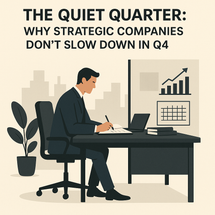Printing remains a cornerstone of business operations, even as digital transformation reduces the need for everyday paper output. For organizations that rely on secure documents, compliance-driven printing, or professional-grade communication materials, the choice of printing technology matters. Two primary options dominate the market: laser printing and inkjet printing.
While both have a place, laser toner printing continues to stand out in business environments where speed, efficiency, and durability are critical. This paper explores how laser toner printing works, outlines its benefits, and compares it to inkjet printing across several dimensions to help decision-makers choose the right solution for their needs.
How Laser Toner Printing Works
Laser printing is a highly engineered process that blends optics, static electricity, and heat to deliver precise results. A laser beam projects an image onto a rotating photosensitive drum, creating an electrostatic pattern. Toner, a fine powder containing pigment and polymer, adheres to the charged areas of the drum. That toner is then transferred to a sheet of paper and fused permanently by heated rollers in the fuser assembly.
The outcome is sharp, durable text and images that do not smudge under normal handling. Because the toner is embedded into the paper fibers through heat and pressure, the prints are more resistant to environmental factors such as moisture and light exposure compared to liquid-ink alternatives.
Laser Printing vs. Inkjet Printing
When comparing laser and inkjet printing, it is important to recognize that both technologies have evolved significantly. Yet their core differences still influence which is best suited to particular tasks.
- Print Quality: Inkjet printers are known for their ability to produce high-resolution images, vibrant colors, and smooth gradients, making them a top choice for photo printing, creative projects, or marketing materials where rich visuals matter. Laser printers excel at text clarity, line precision, and consistent coverage, producing sharp blacks and professional-looking documents. In environments where accuracy of small text, barcodes, or fine detail is required, lasers are often the superior option.
- Speed and Efficiency: Laser printers are designed for volume. Many models can print 20 to 60 pages per minute, and high-end enterprise models far exceed that. Inkjets typically handle fewer pages per minute, and performance drops further with color-heavy jobs. For businesses processing large batches, such as invoices, reports, or forms, the efficiency of laser technology translates into saved time and higher productivity.
- Durability of Prints: Laser toner is fused into the page during the heating process, creating prints that resist smearing, water exposure, and fading over time. This durability makes laser-printed documents ideal for records that must be archived, official correspondence, or financial documents such as checks. Inkjet prints, on the other hand, remain more vulnerable to smudging when freshly printed and can degrade when exposed to moisture or sunlight.
- Cost Considerations: Inkjet printers typically cost less upfront, making them accessible for small offices or personal use. However, their cartridges yield fewer pages and need frequent replacement, resulting in a higher cost per page over the life of the printer. Laser printers require a larger initial investment in both equipment and toner cartridges, but the yield per cartridge is much higher, bringing down the cost per page significantly. Over time, especially for high-volume users, laser printers usually deliver better cost efficiency.
- Applications and Versatility: Inkjet printers are versatile for low-volume use cases that prioritize color and image fidelity, such as creative design studios, photo printing, or marketing departments. Laser printers, meanwhile, are the backbone of office environments, banks, insurance companies, and industries that rely on compliance and security. Specialized toners, including MICR toner, extend their application into financial transactions, enabling secure check printing and compliance with federal banking standards.
Why Businesses Rely on Laser Printing
Laser printing continues to dominate in professional environments because it aligns with the core needs of business: speed, reliability, security, and predictable costs. Organizations that print contracts, reports, invoices, labels, or checks find that laser printers deliver consistent quality without the interruptions of frequent maintenance or cartridge changes.
In addition to their performance advantages, laser printers also integrate well into enterprise workflows. Many models support network printing, advanced job management, and security protocols, making them a natural fit for IT-managed environments. The ability to handle specialty toners, such as MICR, gives them an added role in industries where compliance and fraud prevention are paramount.
Final Thoughts
The decision between laser and inkjet printing ultimately comes down to the type of output a business requires. Inkjets remain strong in niches where color fidelity and image quality are top priorities, while lasers continue to lead where speed, clarity, and durability are non-negotiable. For organizations managing large print volumes, seeking lower long-term costs, or requiring secure applications such as check printing, laser toner technology remains the clear choice.
In a digital-first world, printing may no longer be universal, but where it matters most, legal documents, financial instruments, secure workflows, and professional communication, laser printing provides unmatched performance. Its combination of efficiency, quality, and compliance ensures it will remain a trusted technology for businesses well into the future.
Recent Posts
Nov 17th 2025
Industries That Can Transform Their Operations With Epson ColorWorks On-Demand Color Labeling
Nov 10th 2025
The Quiet Quarter: Why Strategic Companies Don’t Slow Down in Q4
Nov 3rd 2025



